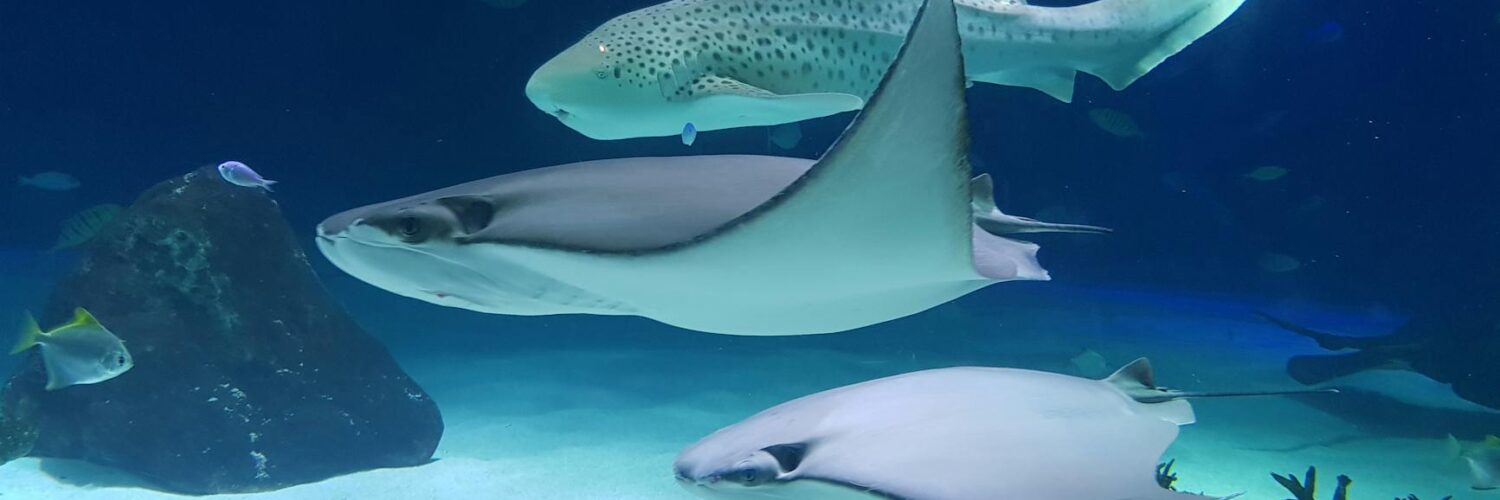Ever feel like you’ve got a handle on how the world works? You know, the sun rises, gravity pulls, trees grow, animals move? Well, buckle up, buttercup, because Mother Nature is about to yank that rug right out from under your feet. We often think of our planet as a predictable stage, but it’s more like a spontaneous, avant-garde performance with plot twists you’d never see coming. Forget everything you thought you knew about the wild; we’re diving into the truly bizarre, the unexpectedly brilliant, and the downright mind-blowing secrets that animals, plants, and even entire ecosystems have been keeping under wraps. Get ready to challenge your assumptions and fall in love with Earth’s eccentric opera all over again.
Picture a peaceful forest, trees standing tall, seemingly solitary, competing for sunlight and nutrients. That’s the classic image, right? A rugged individualist triumphing in the wild. Well, stop right there, because that picture is missing a crucial, subterranean social network that would make Mark Zuckerberg blush. Beneath your feet, an intricate, hidden world of communication is buzzing – the “Wood Wide Web.”
This isn’t some sci-fi fantasy; it’s a real, living internet powered by fungi. Mycorrhizal fungi, to be precise, form vast, intricate networks of tiny threads (hyphae) that colonize the roots of almost all plants. These fungi don’t just sit there; they act as a biological bridge, connecting different trees and plants, allowing them to communicate and even share resources. Think of it like a massive underground internet where trees are sending emails and sharing files.
For instance, a “mother tree” – usually an older, larger tree – can pump sugars and nutrients through this fungal network to saplings struggling in the shade. When one tree is under attack from pests, it can send warning signals through the network, alerting its neighbours to ramp up their chemical defenses. This symbiotic relationship challenges our anthropocentric view of nature as purely competitive. It reveals a profound level of cooperation and interdependence, where the forest acts less like a collection of individuals and more like a superorganism, a true community working together for the greater good of the ecosystem.
Octopuses: The Eight-Armed Einsteins of the Deep
When you think of intelligent animals, what comes to mind? Chimpanzees, dolphins, maybe elephants? You’re probably picturing a creature with a big, complex brain, usually a vertebrate. But what if I told you that one of the smartest creatures on Earth looks like a squishy, alien handbag with eight arms and a beak? Yes, we’re talking about the octopus, and these cephalopods are here to shatter all your preconceptions about what constitutes smarts.
Common belief holds that invertebrates are simple, instinctive creatures. Octopuses laugh (metaphorically, of course) at that notion. They are master escape artists, regularly foiling the most secure aquarium tanks. They’ve been observed unscrewing jars from the inside to get to food, mimicking other dangerous sea creatures to ward off predators, and even using tools – stacking rocks to build fortresses or carrying coconut shells for mobile homes. Their intelligence isn’t centralized like ours; two-thirds of an octopus’s neurons are in its arms, meaning each arm can literally “think for itself.”
They solve puzzles, learn by observation, and even recognize individual human faces. Some scientists believe they exhibit curiosity and play, traits usually associated with highly intelligent mammals. This utterly blows away the idea that complex thought is exclusive to creatures with spines and big brains. The octopus reminds us that intelligence can manifest in incredibly diverse, unexpected, and truly alien ways, making us question the very definition of consciousness. They’re basically the deep-sea superheroes we never knew we needed.
Sloths: Not Lazy, Just Strategically Chill
Ah, the sloth. The poster child for “lazy.” Slow-moving, perpetually sleepy, barely stirring from their arboreal naps. We look at them and think, “What a life! No responsibilities, just chilling.” But to label a sloth as merely “lazy” is to fundamentally misunderstand one of nature’s most ingenious survival strategies. This isn’t laziness; it’s advanced bio-engineering disguised as a leisurely lifestyle.
The common belief is that sloths are slow because they’re not very smart or evolved. The truth is far more fascinating. Sloths primarily eat leaves, which are notoriously low in nutritional value and hard to digest. To survive on such a meager diet, they’ve evolved an incredibly slow metabolism – the slowest of any non-hibernating mammal. Moving slowly conserves precious calories, allowing them to extract every last bit of energy from their leafy meals, which can take days to digest in their multi-chambered stomachs.
Furthermore, their sluggishness is a brilliant defense mechanism. Predators like jaguars and harpy eagles rely on movement to spot prey. A sloth moving at a glacial pace, often blending seamlessly with the canopy due to algae growing on its fur (another symbiotic marvel!), becomes incredibly difficult to detect. So, that “lazy” sloth isn’t being lazy; it’s performing an intricate, energy-efficient dance of survival honed over millions of years. It’s a masterclass in minimalism and stealth, showing us that sometimes, the slowest path is indeed the most genius.
Crows and Ravens: Brains in Black Feathers
When someone says “bird brain,” it’s usually not a compliment, right? It implies small, instinctive, unthinking. If you’ve ever held that stereotype, prepare to have your mind absolutely blown by the common crow and its larger cousin, the raven. These members of the corvid family are so ridiculously intelligent, they routinely challenge scientists to rethink avian cognition, sometimes even outsmarting young children in problem-solving tasks.
Common belief: Birds are creatures of instinct, not complex thought. Challenge: Crows and ravens are master tool-users, problem-solvers, and social strategists. They’ve been observed bending wires to retrieve food, using multiple tools in sequence (e.g., dropping a stone into a tube to raise water, then using a stick to get the floating food), and even understanding water displacement (the famous Aesop’s Fable isn’t just a fable!). They can plan for the future, hiding food for later use and even caching tools they might need. They recognize individual human faces and remember them, holding grudges or favors for years.
Perhaps most astonishingly, some corvids have demonstrated self-awareness, recognizing themselves in mirrors – a trait found in only a handful of other animals, including humans, great apes, and dolphins. They exhibit complex social structures, communicate with sophisticated calls, and engage in what looks suspiciously like “play.” So next time you see a crow, remember you’re looking at a feathered genius, a creature whose “bird brain” is doing some seriously high-level thinking, proving that intelligence comes in all shapes, sizes, and species.
Life in the Abyss: Thriving Without the Sun
For most of human history, and certainly in all our biology textbooks, the sun has been the ultimate source of energy for life on Earth. Photosynthesis underpins vast ecosystems, and without sunlight, we assumed, there could be no complex life. The deep ocean was thought to be a barren, lifeless abyss – a cosmic desert. Then, in the late 1970s, scientists stumbled upon something that completely redefined our understanding of life’s fundamental requirements: hydrothermal vents.
Common belief: All life ultimately depends on sunlight. Challenge: Entire ecosystems thrive in the pitch-black, crushing depths of the ocean, fueled by chemicals spewing from volcanic vents on the seafloor. These “black smokers” or “white smokers” release superheated, mineral-rich water, creating a toxic environment that should, by all accounts, be utterly devoid of life.
Instead, scientists found incredibly vibrant communities flourishing around these vents. Giant tube worms, mussels, clams, shrimp, and even some fish species, all thriving in an environment utterly disconnected from the sun’s energy. How? Through a process called chemosynthesis. Instead of photosynthesis, where organisms convert sunlight into energy, chemosynthetic bacteria convert chemicals like hydrogen sulfide from the vents into organic matter. These bacteria form the base of an entirely new food web, supporting an abundance of unique, bizarre, and often giant creatures. Was ist das seltenste Naturphänomen?
This discovery was a monumental shift in our understanding of where and how life can exist. It opened up possibilities for life on other planets that lack sunlight, but possess geothermal activity. The deep-sea vents prove that life is far more resilient, adaptable, and creative than we ever dared to imagine, forging its own path in the most extreme conditions.
Deserts: Not Barren Wastelands, But Bustling Biodiversity Hubs
When you picture a desert, what comes to mind? Endless stretches of sand, scorching sun, maybe a tumbleweed or two, definitely not much life, right? We often see deserts as desolate, harsh, and utterly barren landscapes, places to be endured rather than celebrated. This common perception couldn’t be further from the truth.
While deserts certainly present extreme challenges – minimal water, temperature swings, intense sunlight – they are far from lifeless. In fact, they are home to an astonishing array of specially adapted flora and fauna, making them incredibly vibrant and unique biodiversity hotspots. Take the Sonoran Desert in the southwestern United States and Mexico, for instance. It’s not just cacti; it’s a dynamic ecosystem teeming with life. The iconic Saguaro cactus provides habitat and food for countless species, from Gila woodpeckers nesting in its arms to desert tortoises finding shade at its base.
Many desert creatures are masters of disguise or nocturnal navigators to escape the daytime heat. Kangaroo rats never need to drink water, getting all their hydration from the seeds they eat. Fennec foxes have massive ears to dissipate heat. Even seemingly dry riverbeds can burst into life after a rare rainfall, with countless “resurrection plants” springing up and tiny, dormant creatures awaking. Deserts challenge our idea of what a “thriving” ecosystem looks like. They demonstrate that life, even in the most unforgiving environments, finds a way to adapt, diversify, and create beauty. They hold secret gardens and bustling nocturnal cities, proving that even in seemingly empty spaces, there’s a whole lot going on.
Plants That “Scream” and “Hear”: The Active World of Flora
For centuries, we’ve pretty much thought of plants as passive, unthinking organisms. They stand there, soak up sun, look pretty, and occasionally get eaten. They don’t move much, don’t seem to react beyond growing towards light, and certainly don’t communicate in any meaningful way. Or do they? Prepare to have your perception of the botanical world utterly transformed, because plants are far from passive observers; they’re active, responsive, and incredibly sophisticated communicators.
Common belief: Plants are static, non-responsive automatons. Challenge: Plants perceive their environment, communicate with each other, and even react to threats with surprising complexity, including making sounds we can’t hear. Recent research has shown that plants can actually “hear” or, more accurately, sense vibrations. Studies have demonstrated that plants can detect the sound of munching caterpillars through the vibrations generated on their leaves. Upon “hearing” these signals, the plants then ramp up the production of defensive chemicals to deter the hungry invaders. It’s like an early warning system built into their very being.
Even more startling is the discovery that plants “scream” when stressed. Researchers have found that plants under stress (like dehydration or having their stems cut) emit ultrasonic sounds – a bit like clicks or pops – that are inaudible to the human ear but can be picked up by specialized microphones. These aren’t just random noises; the type and frequency of the sounds change depending on the stressor. While we don’t yet fully understand the implications, it suggests that plants are actively broadcasting information about their condition to their environment, possibly even to other plants or insects. This challenges the very core of our understanding of plant life, revealing a dynamic, communicative world that exists just beyond our human senses.
Unveiling Earth’s Grand Performance
So, there you have it. A whirlwind tour through some of nature’s most magnificent, surprising, and often bizarre revelations. From the secret internet of the forest to the eight-armed geniuses of the deep, from the strategically slow sloth to the super-smart crow, and the bustling life of deserts to the “screaming” plants, our planet is an ever-unfolding tapestry of unexpected wonders. We often walk through life taking the natural world for granted, assuming we’ve got it all figured out. But the truth is, we’re only scratching the surface of Earth’s grand, eccentric opera.
These eye-opening facts aren’t just fun trivia; they challenge us to rethink our place in the world, to shed our anthropocentric biases, and to truly appreciate the incredible diversity and ingenuity of life. They remind us that intelligence isn’t just one thing, survival strategies are infinitely varied, and even the most seemingly barren or passive parts of nature are teeming with hidden dramas and complex interactions. The next time you step outside, take a moment. Look closer. Listen harder. The natural world is full of secrets, waiting to be discovered, ready to blow your mind and deepen your connection to this incredible planet we call home.
What other amazing truths are out there, just waiting for us to uncover them? The more we learn, the more we realize how much more there is to marvel at, protect, and cherish. Nature's Unexpected Plot Twists: Wild Wonders That'll Make You Say "Whoa!"

























Kommentar hinzufügen